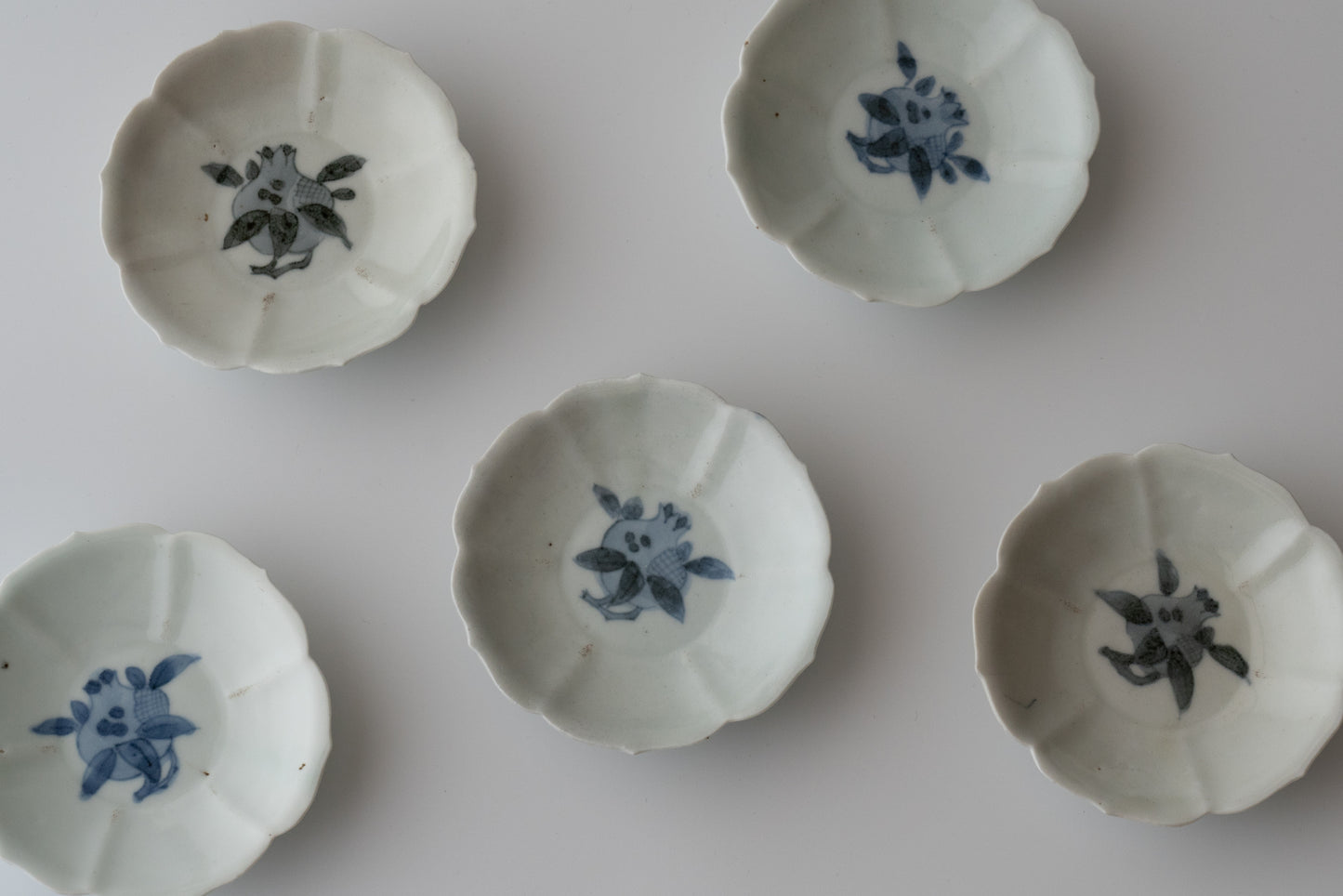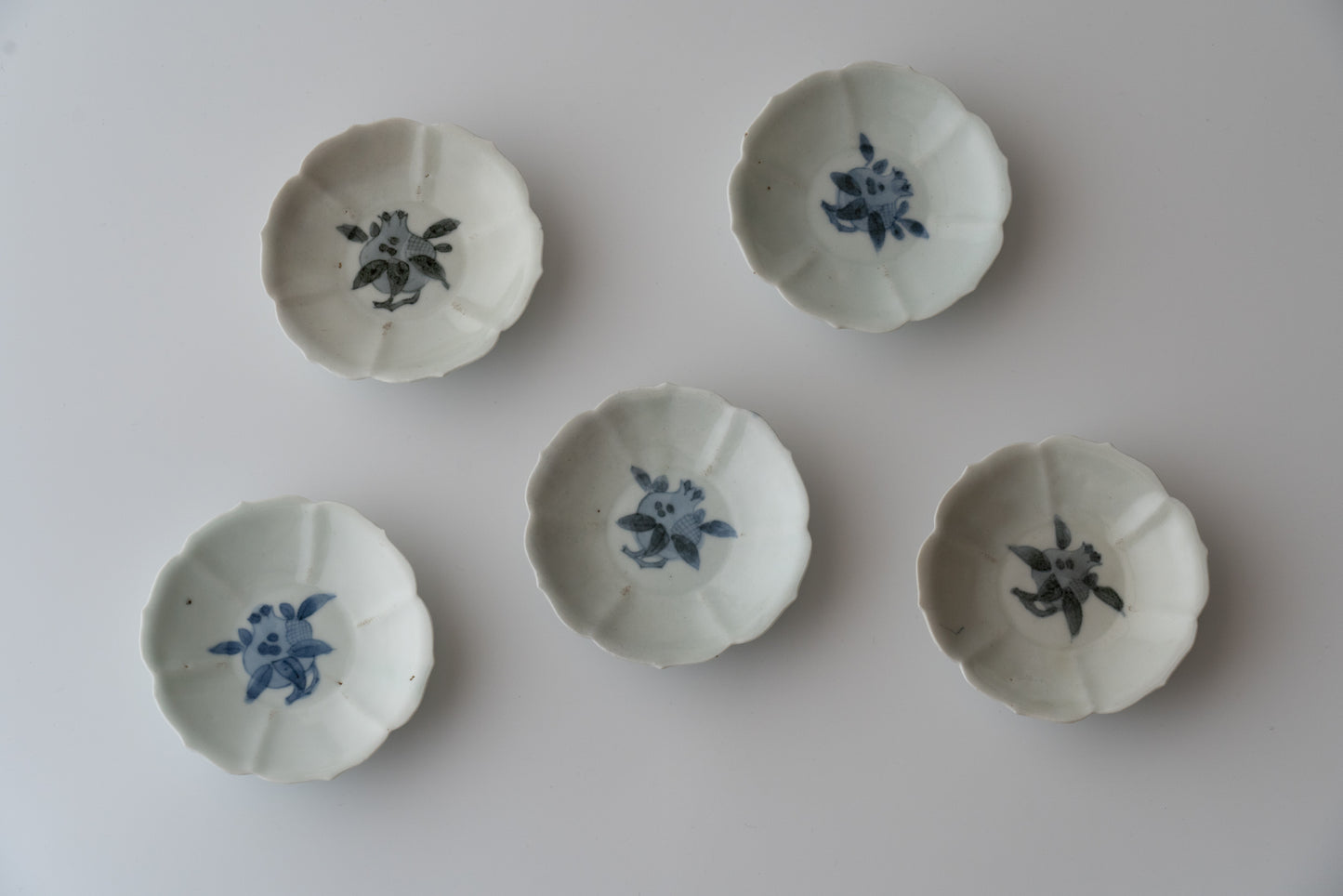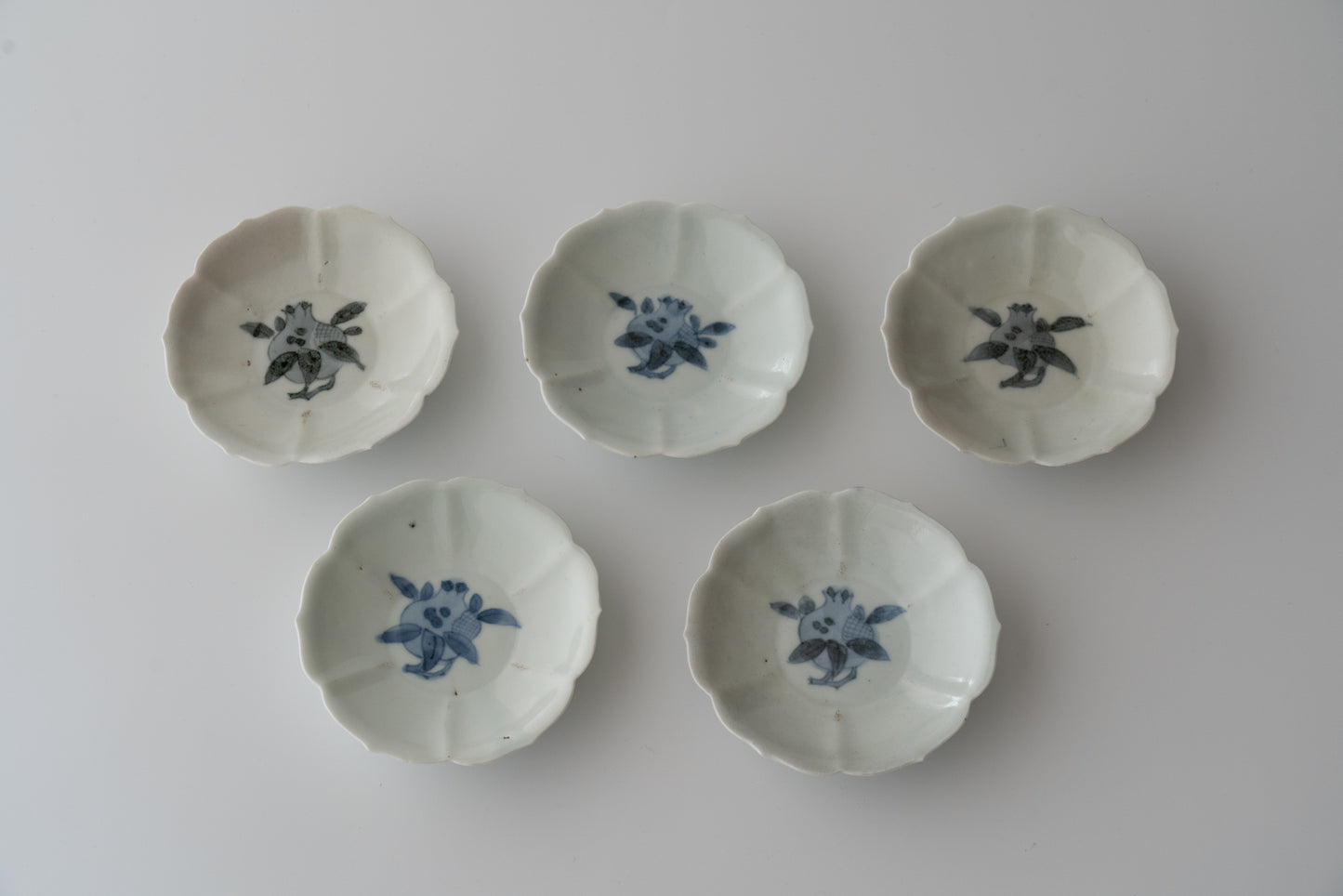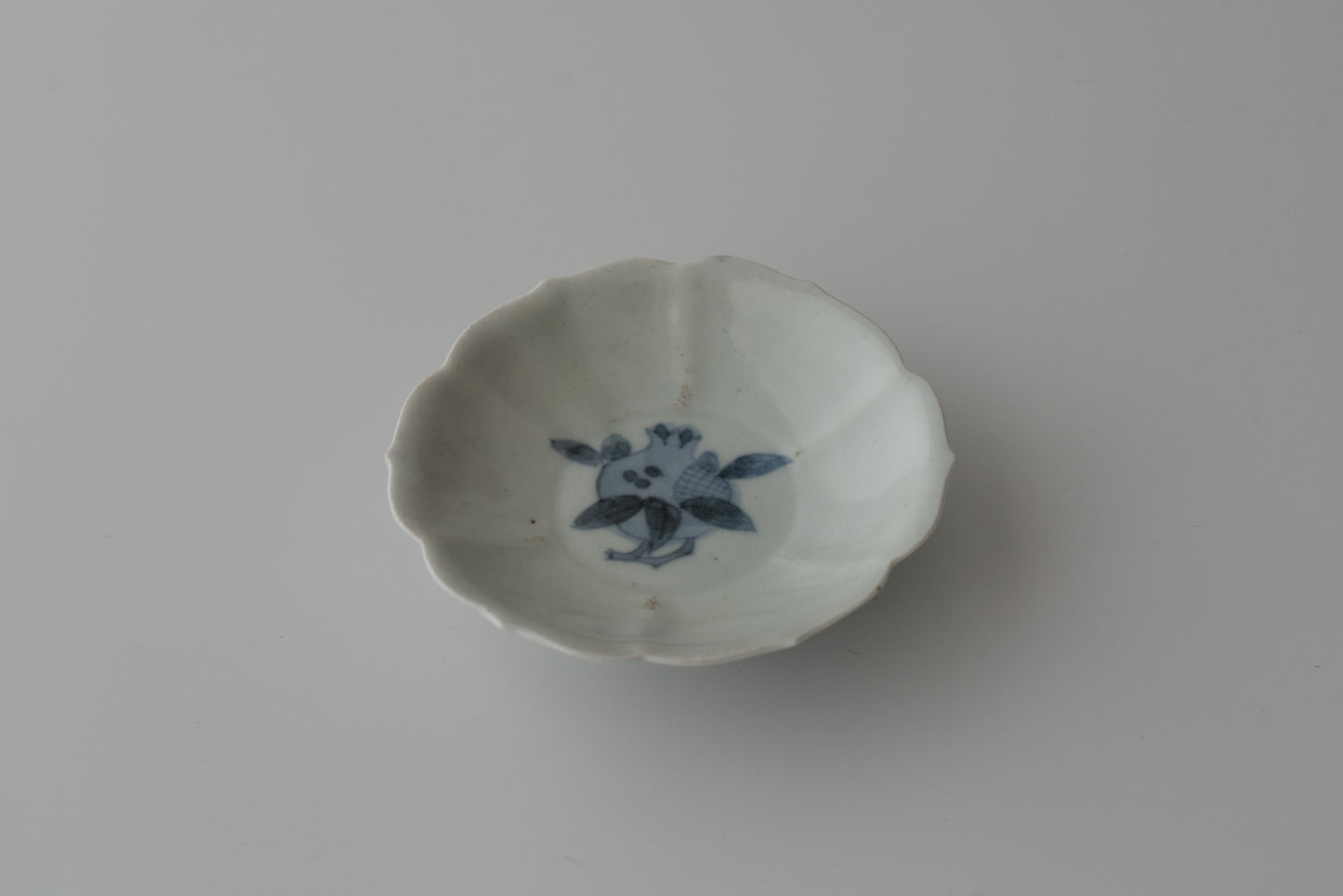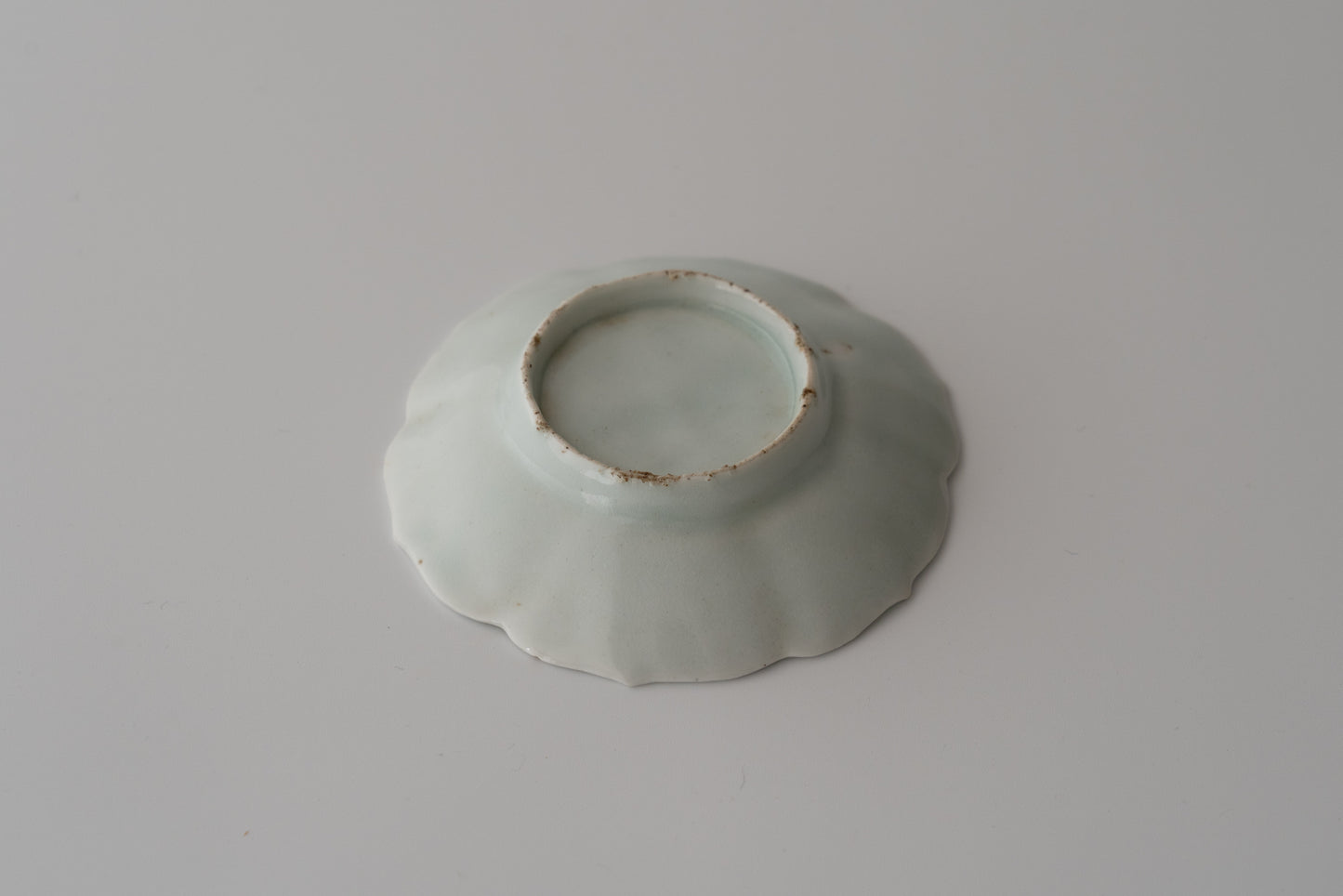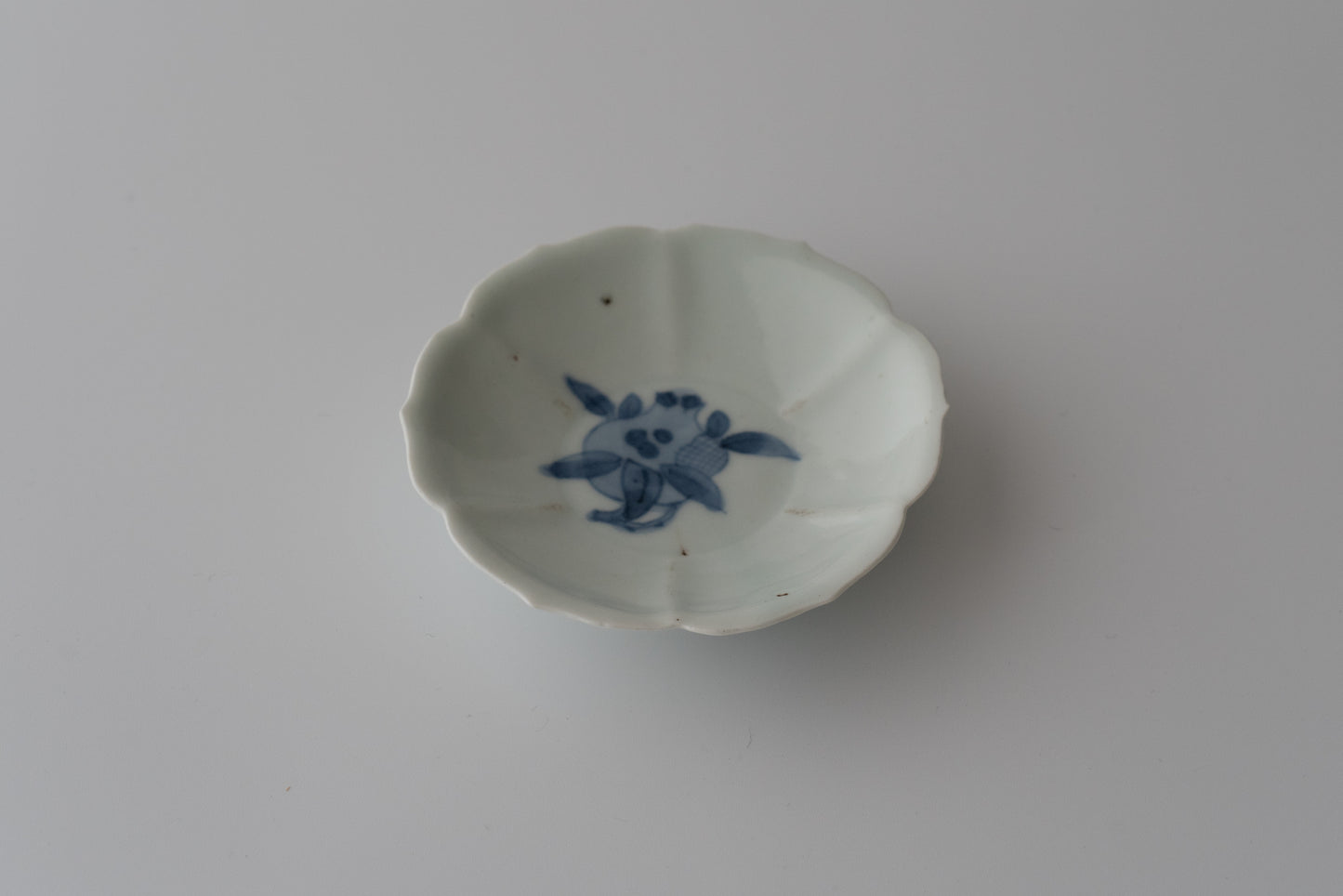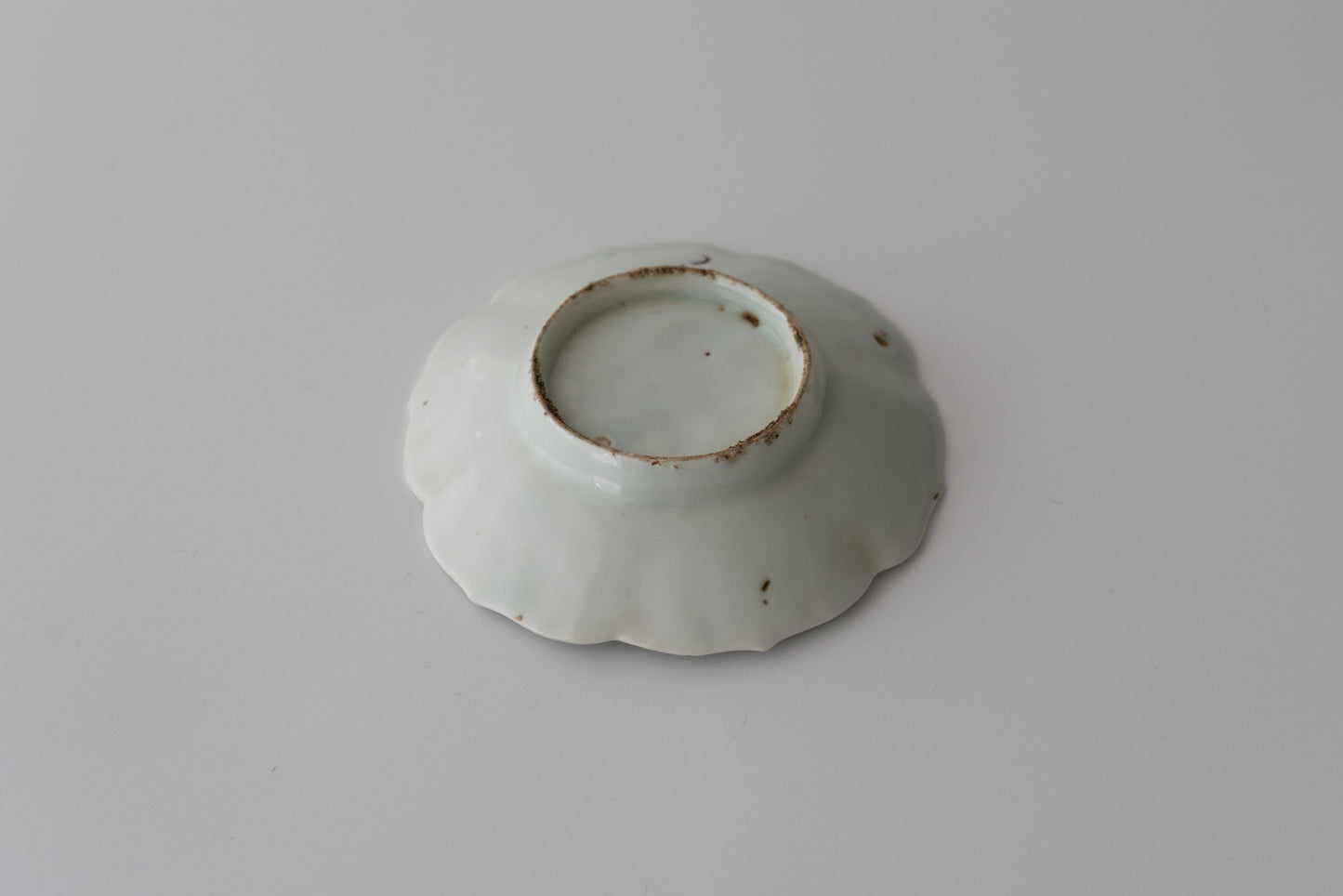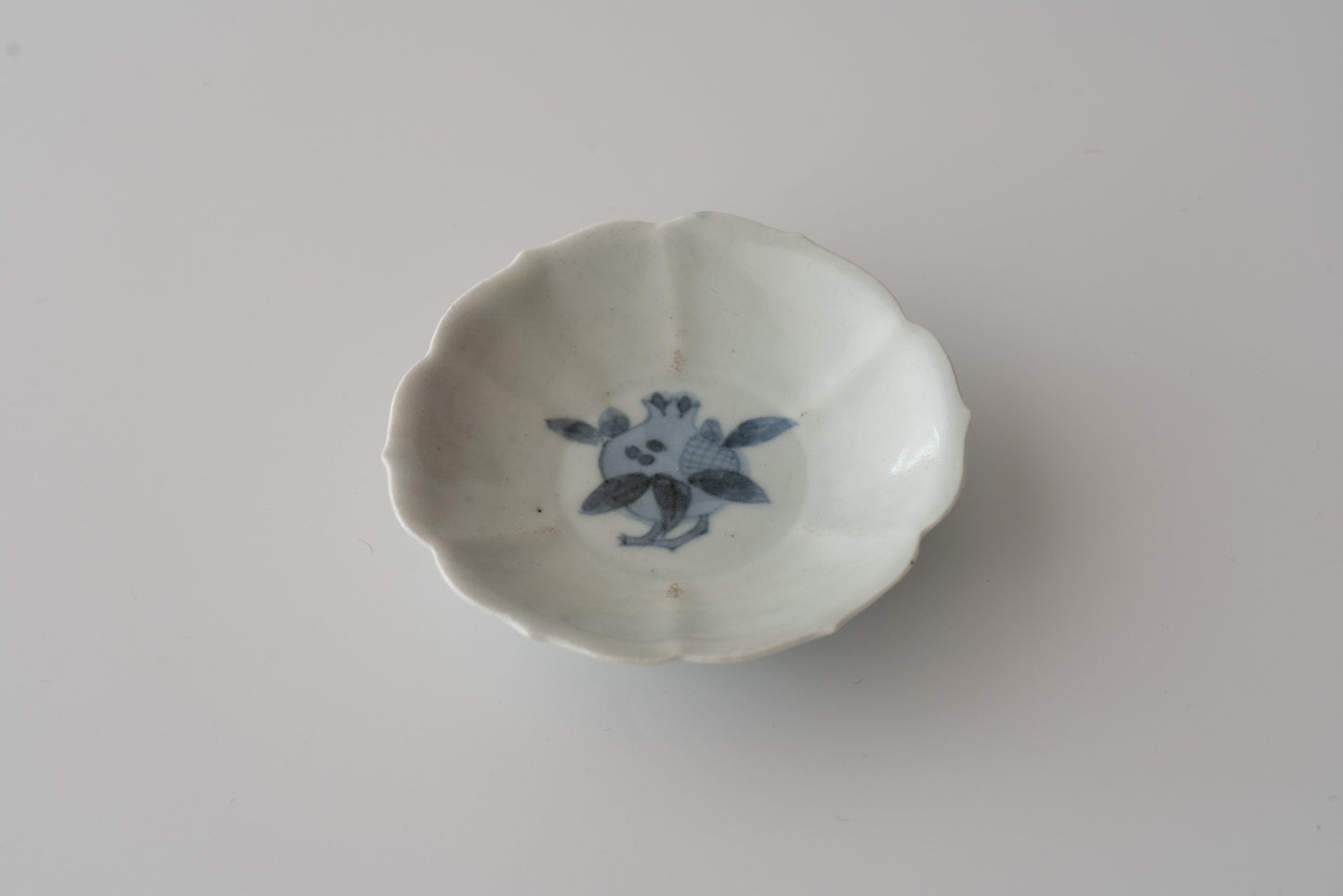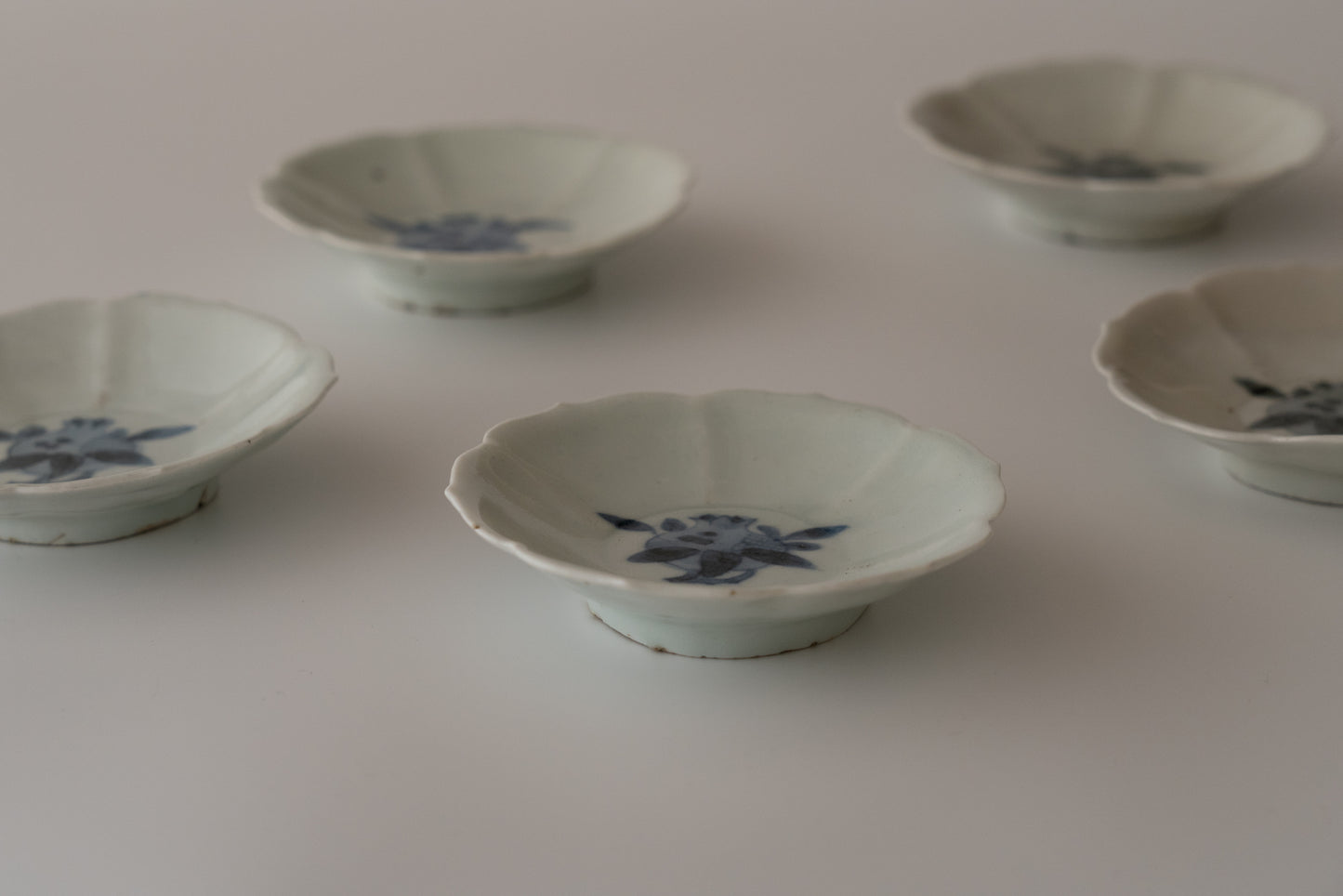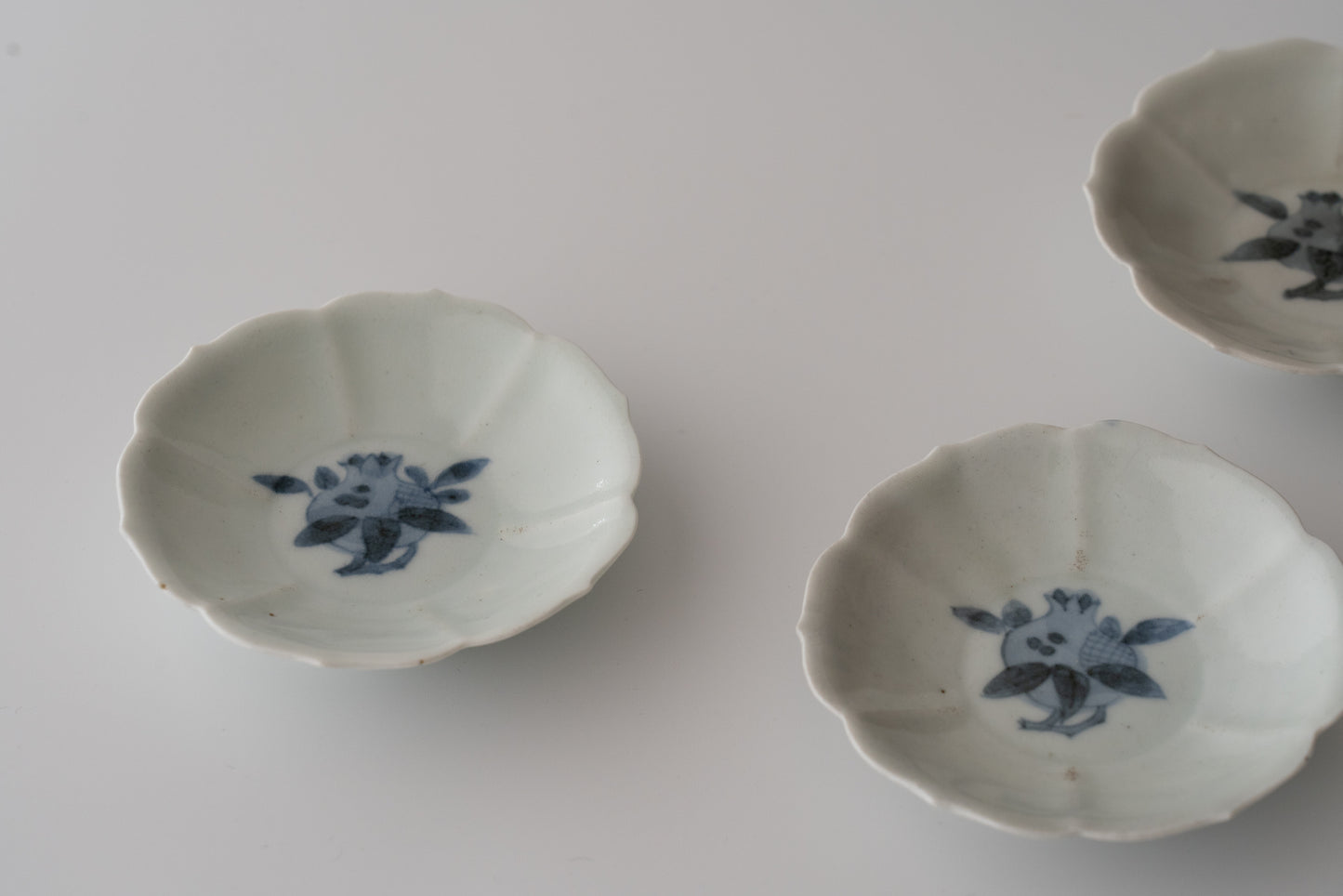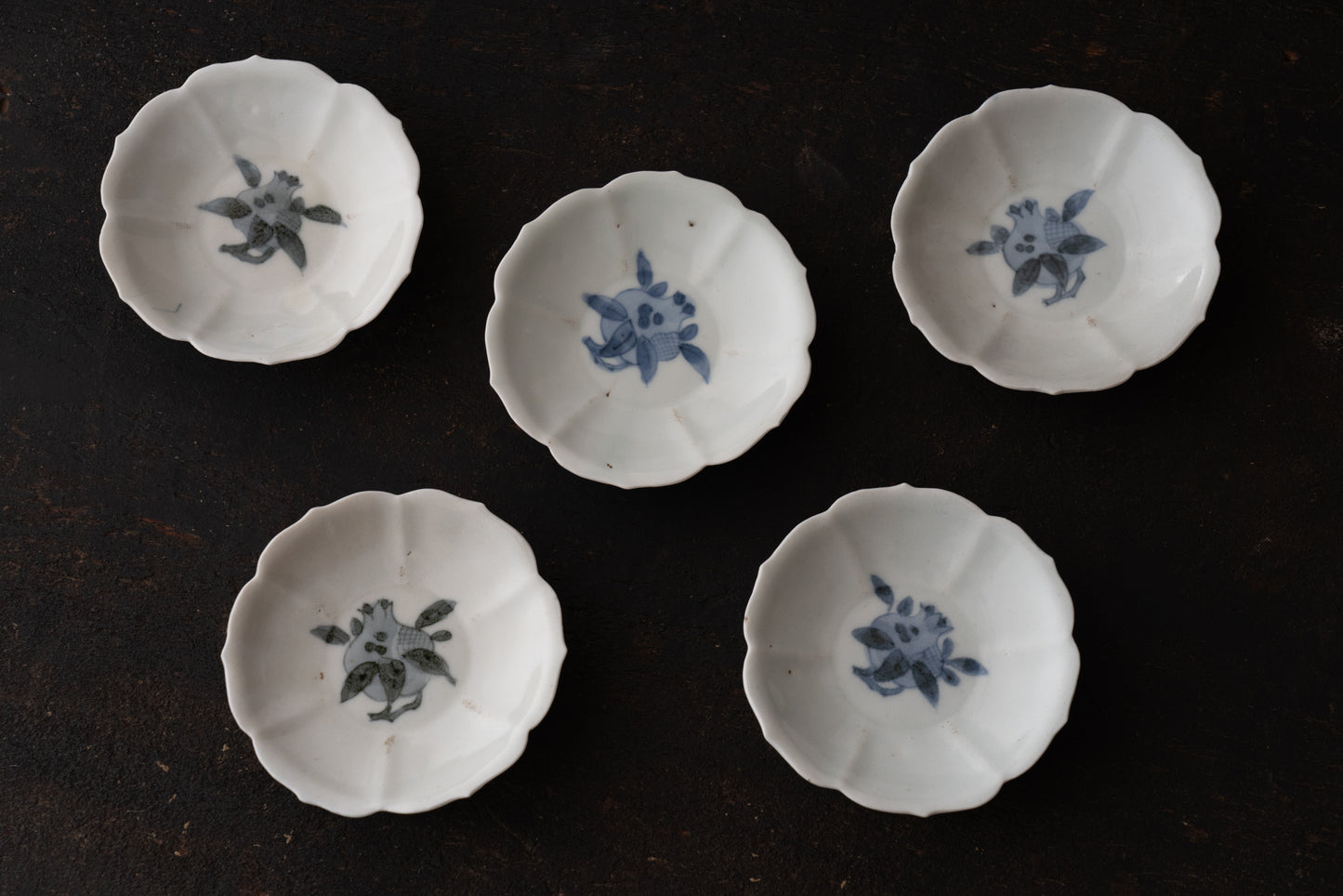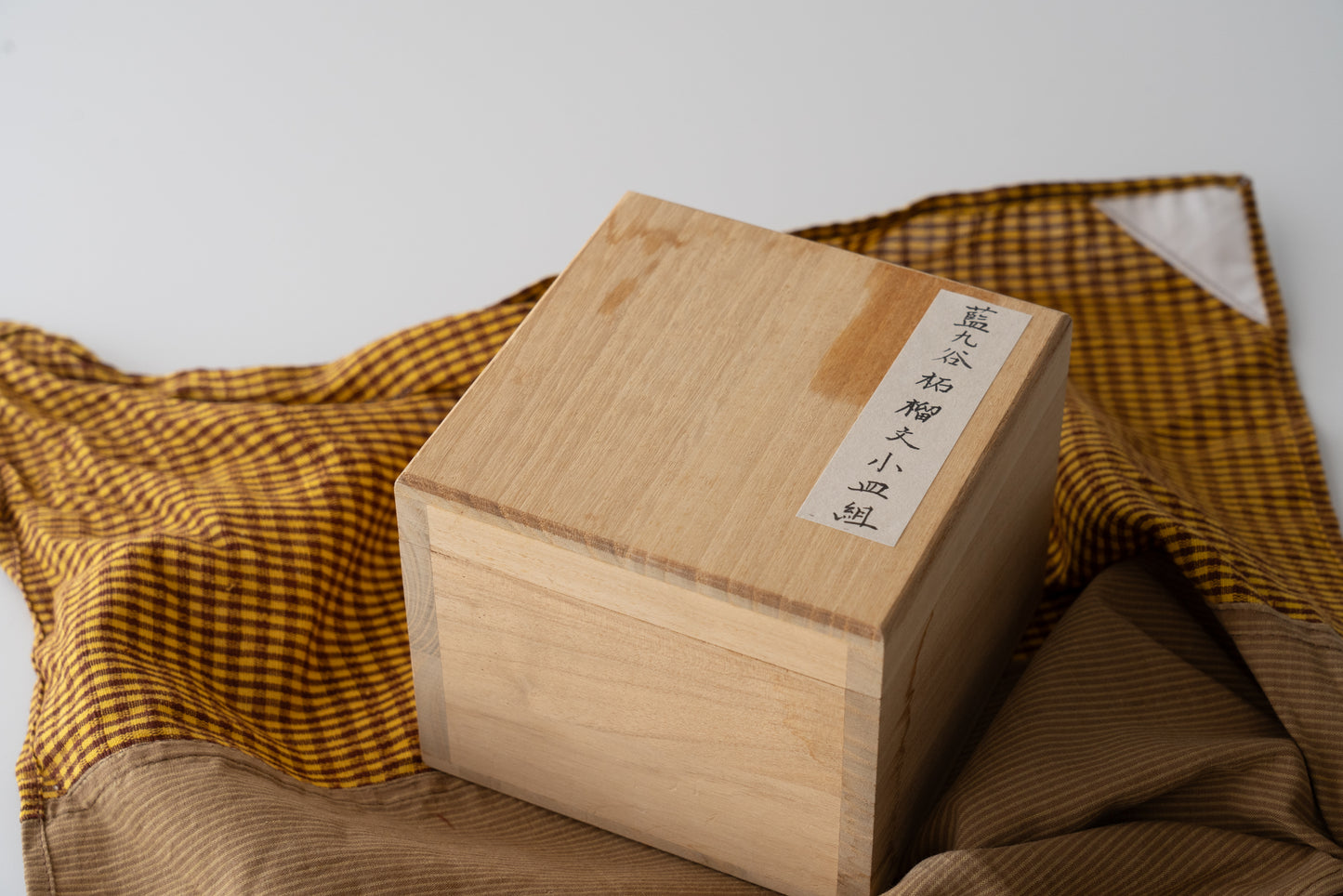A set of five small dishes with pomegranate design, Early Imari ware
- Region/Era Japan, Arita / Edo period, 1630-1640s
- Size H2.4×W10.2×D10.7cm
- Condition Good antique condition
- Accessory wood box
- No. 42nk-2
This small dish is about 10 cm in diameter, large enough to fit in the palm of one's hand.
A pomegranate is painted in underglaze blue in the center of the elaborate floral shape, giving the dish a neat and elegant appearance.
The unique texture of the plate is created by the " nama-gake" technique of glazing and firing without pre-firing, and the distortion of the shape, which is not perfect, has a gentle charm.
The coloring of the underglaze blue varies from fresh blue to almost navy blue. This is also a characteristic of early Imari.

We were delighted to be able to get a very attractive item at a reasonable price.
Hata Hideo, a collector of antiques, was one of those who appreciated the beauty of small plates rather than the big, decorative plates that everyone likes.
In his books, he introduces many small dishes that are not conspicuous but are elegant and witty.
In one of his commentaries, he wrote, "I want more of this kind of thing. I want to see more. I want to look for more.
When I found this dish, I felt exactly like that.

Generally, Imari ware from the pioneer period up to the mid-17th century is called early Imari. This work is estimated to be made in the 1630s to 1640s based on the reference ages of similar pieces.

There are no scratches on any of the five pieces, and they are in good condition.
Even just early Imari ware is fragile. It is miraculous that all five pieces are intact despite the delicate shape of twilled flowers.
The five pieces are sold as a set.

To pick up and see the actual item in the gallery.
Reservation